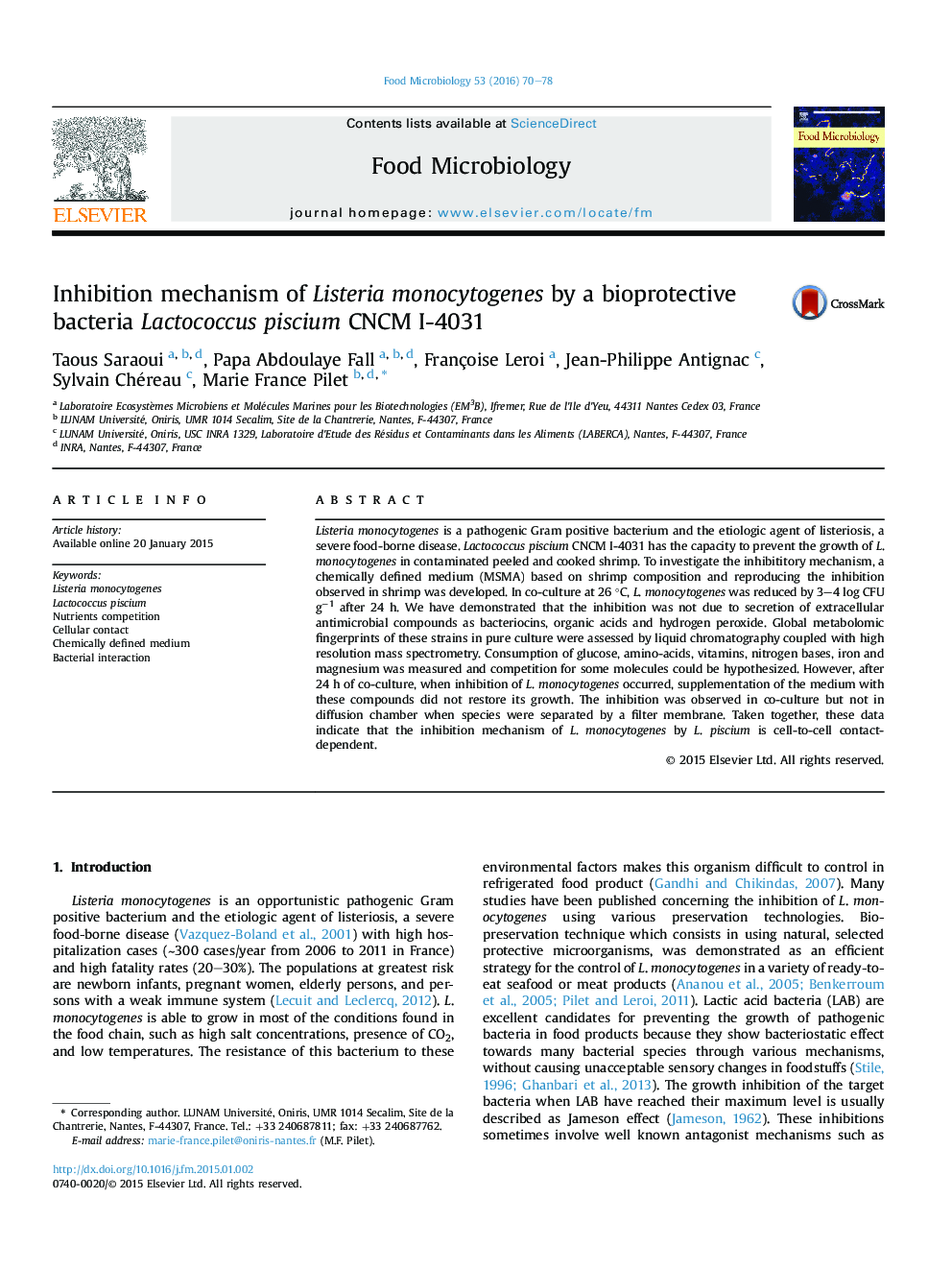| Article ID | Journal | Published Year | Pages | File Type |
|---|---|---|---|---|
| 4362699 | Food Microbiology | 2016 | 9 Pages |
•A chemically defined medium (MSMA) was developed to study bacterial interactions.•Lactococcus piscium CNCM I-4031 inhibits the growth of L. monocytogenes as in shrimp.•This interaction requires contact between both strains.•First report of contact dependant inhibition between a LAB and L. monocytogenes.
Listeria monocytogenes is a pathogenic Gram positive bacterium and the etiologic agent of listeriosis, a severe food-borne disease. Lactococcus piscium CNCM I-4031 has the capacity to prevent the growth of L. monocytogenes in contaminated peeled and cooked shrimp. To investigate the inhibititory mechanism, a chemically defined medium (MSMA) based on shrimp composition and reproducing the inhibition observed in shrimp was developed. In co-culture at 26 °C, L. monocytogenes was reduced by 3–4 log CFU g−1 after 24 h. We have demonstrated that the inhibition was not due to secretion of extracellular antimicrobial compounds as bacteriocins, organic acids and hydrogen peroxide. Global metabolomic fingerprints of these strains in pure culture were assessed by liquid chromatography coupled with high resolution mass spectrometry. Consumption of glucose, amino-acids, vitamins, nitrogen bases, iron and magnesium was measured and competition for some molecules could be hypothesized. However, after 24 h of co-culture, when inhibition of L. monocytogenes occurred, supplementation of the medium with these compounds did not restore its growth. The inhibition was observed in co-culture but not in diffusion chamber when species were separated by a filter membrane. Taken together, these data indicate that the inhibition mechanism of L. monocytogenes by L. piscium is cell-to-cell contact-dependent.
